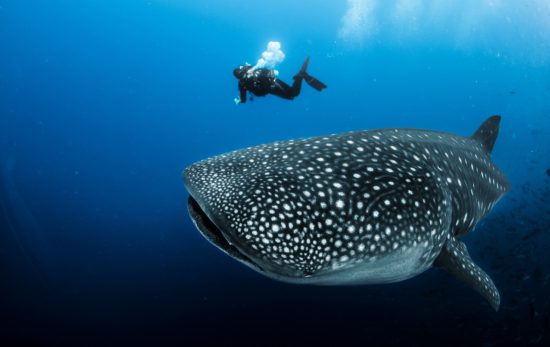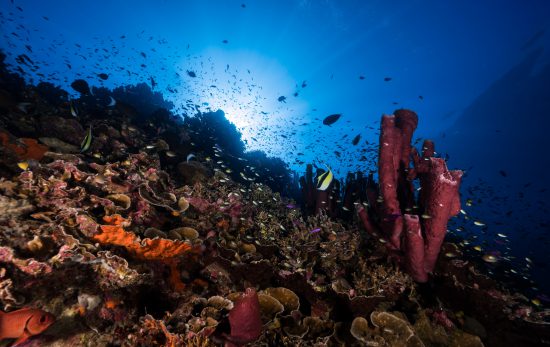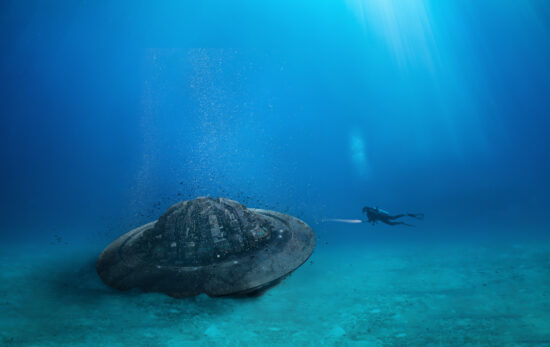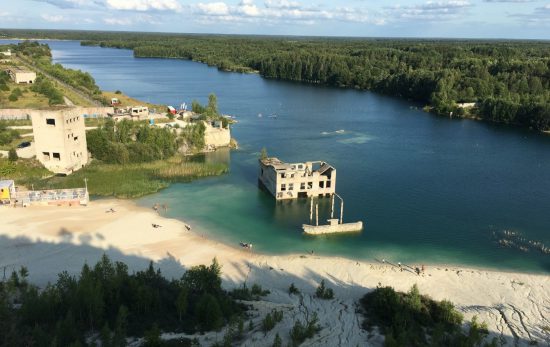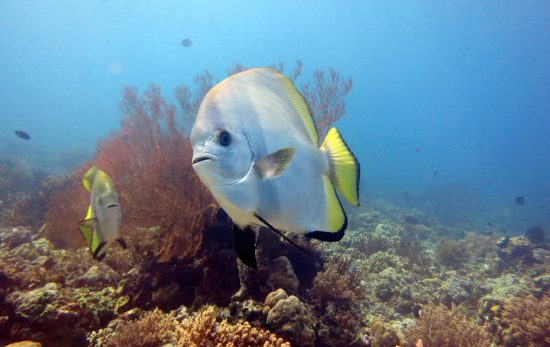If I had a single piece of advice about how to make a trip unique and unforgettable, it would be: wander and don’t be afraid to get lost on the way. As much as you can, try to include time in your itinerary to explore places not rated on your favourite guide book or review website. Just look at the map and go find out what that intriguing place looks like. I promise you will bring back memorable anecdotes which could sound like “Did I tell you the story of when I dived in lava tubes in Hawaii?”.
Hawai’i Island, or Big Island as it is mostly referred to, to avoid confusion with the Archipelago’s name, is world-famous for its night dive with manta rays. While it was, of course, on my scuba diving bucket list, my favourite diving experience remained the Kohala Coast and its lava tubes on the northwest side of the island.
Local marine fauna on the Kohala Coast was typical of the Hawaiian island. I saw white-mouth moray eels, leaf scorpion fish, frogfish, and I could even quickly spot dolphins after hearing them singing! I quickly got a favourite fish always chilling on a piece of coral: the arc-eye hawkfish. Its names come from the rainbow colours around his eyes.

Scuba diving in lava tubes was the main highlight of my dives on the Kohala Coast. Big Island is one of the most actively volcanic islands in the world so it may sound daunting at first. No worries, the Kohala Volcano erupted for the last time 120,000 years ago!
The best sites for lava tube dives on the Kohala Coast are “Black Point”, “Frog Rock” and “Lava Dome”. As discussed during the dive briefing with our divemaster, diving through lava tubes is not for claustrophobic divers. However, they were mostly flat and wide swim-through. Only a few chambers needed to go through a narrow swim-through. It is important to note that we were at all time a couple of meters away from an exit. Diving in lava tubes only requires your best buoyancy skills. So if you feel unsure, better to get more training before considering these dives in Hawaii.

Exploring the lava tubes, was full of unique marine species I had never seen anywhere else, from the snowball nudibranch to marbled shrimps. Compared to the other sites of Hawaii where I dived, I saw many more nudibranchs including the white-margin nudibranch and the famous blue dragon. You can also see many schools of red soldierfish, also called paeony bulleye fish, hiding in the tunnels. Their bright red colour may remind you that at the very same place lava used to flow!
Find out more about diving in Hawaii on the PADI Travel Scuba Guide.
Support Maui’s Scuba Diving Community
PADI is committed to supporting those whose livelihoods have been uprooted by the devastating Maui, HI fires and stand united with the dive community. Join us in support of relief efforts.
Author Bio
Florine is a PADI Divemaster and a Dive Travel blogger at World Adventure Divers. She dives in tropical to extreme cold waters, selecting her destinations when both adventure diving and cultural discoveries are part of the journey, and showing you how to do it without breaking the bank.
